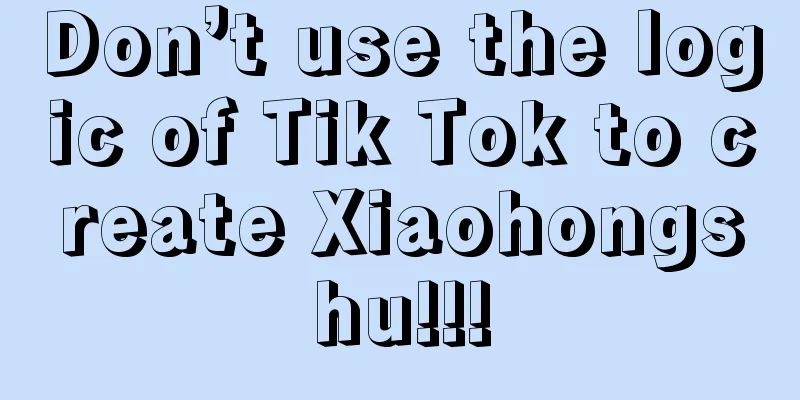As mid- to high-end yogurt falls from its pedestal, will the consumer assassin finally be abandoned?

Once upon a time, having a cup of yogurt after a meal was a "little happiness" for many foodies. But now, this happiness is being taken away by the increasingly expensive "yogurt nobility". Whether it is supermarkets such as Sam's Club, Hema, and CR Vanguard, or convenience stores such as FamilyMart, Lawson, and 7-eleven, there are a wide variety of yogurt brands, including Greek yogurt, mixers, curd yogurt, and cereal yogurt, with all kinds of flavors and selling points. However, at a price of 10 yuan for a small cup, you can no longer afford it. As prices went up, quality seemed to have dropped. Some time ago, the well-known yogurt brand Jane Eyre was on the hot search due to the "84 disinfectant taste, irritating throat" incident. The Internet celebrity yogurt, which used "pure formula" and "no additives" as selling points, was exposed to have a sour taste. Previously, the equally expensive Kashi yogurt was also exposed to have a product with yeast exceeding the standard by 60 times. The popular yogurt brands that were once advertised as "light and healthy", "low-fat" and "zero additives" and achieved high prices through health concept marketing have now been slapped in the face. During the National Day holiday, the topic of "yogurt assassin is not selling well" also became a hot search, which resonated with countless consumers. Many people came to their senses and wondered why a simple cup of yogurt was so expensive? Young people are no longer willing to pay for it, and the halo of mid-to-high-end yogurt is gradually fading. As a result, a silent wave of price cuts began to spread among yogurt brands. When visiting supermarkets, "New Consumption Think Tank" found that many brands have lowered the prices of their products. For example, the price of Jane Eyre Super Bucket is 10.9 yuan, which is about 5 yuan lower than the previous two years. Junlebao, Kashi, Jianchun and other yogurts have also reduced their prices by 3-5 yuan respectively. Many brands have even launched "buy two get one free" and "second piece 1 yuan" activities, and the promotion efforts are much greater than in previous years. Why did the once popular online yogurts quietly fall from grace? Like all products that represent consumption upgrades, is the story of mid- to high-end yogurts coming to an end? 01 Internet celebrity brands frequently fail, and mid-to-high-end yogurt is no longer able to "stab"Driven by the trend of healthy consumption, China's mid-to-high-end yogurt market has experienced a period of rapid development. According to Qichacha data, in 2014, the number of newly registered "yogurt"-related companies in China soared by 1,000, an increase of 61.3%. In 2015, it doubled to 1,141. Internet-famous yogurts such as Jane Eyre, Yoplait, and Le Pure were all born during this period. From ingredient coupons to milk sources, from site coupons to packaging, labels such as low-calorie, organic, and sugar-free have made many middle-class people pay for yogurt. However, the widespread food safety issues have torn off the fig leaf of mid- to high-end yogurt. "New Consumption Think Tank" reviewed the public opinion on yogurt brands in recent years. The most controversial points appeared in the two aspects of taste and food safety. Previously, consumers in different cities posted messages saying that Jane Eyre yogurt tasted "spicy to the throat" and "smelled like disinfectant", and some even said they experienced respiratory and digestive symptoms after consuming it. As public opinion grew, the dairy company that owned the Jane Eyre brand quickly recalled multiple batches of products and gave an official explanation: "According to national standards, no abnormalities were found in the testing. It was preliminarily determined that the odorous product had a sour taste due to excessive fermentation after defrosting." Such a response still failed to quell the doubts on social platforms. After all, among the many mid-to-high-end yogurt brands, Jane Eyre was the first to promote the concepts of "clean ingredient list" and "safe and healthy". Moreover, this is not the first time that Jane Eyre yogurt has collapsed. In the past few years, it has often been involved in quality disputes. The "worm egg incident" in 2020 was a direct blow to its lifeline. At that time, a consumer found yellow eggs on the mouth of the bottle of Jane Eyre high-protein yogurt and suspected that they were worm eggs. In the end, a third-party testing agency intervened and identified that the "worm eggs" were protein coagulated on the lid of the yogurt. The controversy surrounding Jane Eyre is not an isolated case. Kashi Fresh Yogurt was investigated for excessive yeast content, and Kashi subsequently announced that the product line would be discontinued. Conno Foods, the manufacturer behind the emerging brand Armilk Wudao Yogurt, was also punished for not meeting the standard value for coliform bacteria. Food safety incidents like these have greatly reduced consumers’ trust in mid- to high-end yogurt, which in turn has affected product sales. Nielsen IQ data shows that from January to September 2023, the sales of low-temperature yogurt in offline channels nationwide fell by 8.7% year-on-year, and the sales volume fell by 10.2% year-on-year. With the trend of consumption downgrade and food safety issues, this trend is more obvious this year. According to Mashangying data, offline yogurt sales fell 11.46% year-on-year in the first quarter of 2024, and sales fell 12.69% year-on-year. According to the First Financial Business Data Center, the average price of low-temperature yogurt products in the industry will drop from about 80 yuan per piece in 2022 to between 20 and 40 yuan per piece in 2024. After passing the stage of consumption upgrading and health trends, the mid-to-high-end yogurt market is entering a new adjustment period. 02 Why is yogurt becoming more and more expensive?At this point in time, many people are beginning to wonder: How has the price of yogurt been raised step by step? Looking back at the history of yogurt, the industrial production of yogurt in China began in the 1980s. Early yogurt products were mainly solidified, mostly handmade, with a short shelf life and limited sales. With the reform and opening up, and the introduction of foreign companies and technologies, yogurt production technology has been improved, and product categories have begun to diversify. In the mid-1990s, yogurt containing active lactic acid bacteria began to become popular, and market demand and production volume increased rapidly, and gradually expanded to township and rural markets. With the development of cold chain logistics and consumers' pursuit of healthy food, the yogurt market ushered in a period of rapid development in the 21st century. The colorful packaging attracted the attention of many consumers, and the price at that time was also very down-to-earth, mostly 2-3 yuan. The price increase of yogurt began around 2015. At that time, because the cold chain distribution was not yet mature, domestic dairy companies did not pay attention to the low-temperature yogurt category, but focused on the room-temperature yogurt category. During this year, Yoplait, a French brand belonging to the same group as Haagen-Dazs, launched a low-temperature yogurt made from 100% raw milk, priced at 8 yuan per 135 ml. With the concept of "high-end yogurt", Yoplait won over a group of Shanghai middle-class people and promoted the increase in prices in the entire market. The trend of premium yogurt is gradually gaining momentum. Seeing the international brand Yoplait conquering the market and completing the early consumer education, a large number of domestic brands can no longer sit still. Brands such as Jane Eyre and Le Pure have also begun to launch their own low-temperature yogurt products, with prices directly targeting Yoplait, entering the 8-10 yuan price range. In order to get consumers to pay for higher-priced low-temperature yogurt and impact the high-end market, Internet celebrity brands need to differentiate themselves. As a result, these brands began to emphasize the pure formula, no additives, unique taste and nutritional value of their products, and launched more diversified products to meet the needs of different consumers. For example, products rich in probiotics, low in sugar or sugar-free, and plant-based have become the focus of research and development. Brands of all sizes, such as Jane Eyre, Beihai Ranch, Kashi, Huishan Jianshi and Run Dairy, have successively entered this market. The new concept has exactly met the needs of most people. With the improvement of national health awareness, consumers are paying more and more attention to the quality and health attributes of food and are willing to pay higher prices for high-quality yogurt. This consumption trend has in turn promoted yogurt brands to launch higher-priced products. The rise of takeout and fresh food e-commerce has opened up sales channels for low-temperature yogurt. In 2017, domestic yogurt sales exceeded pure milk for the first time, showing huge market potential. The mid- to high-end yogurts have been rapidly gaining popularity, with their product names and styles constantly being updated. For example, in terms of origin, if you promote the concept of Bulgarian origin, I will promote the concepts of Hokkaido and Denmark; in terms of ingredients, if you promote "12 types of lactic acid bacteria", I will label it "100 million lactobacilli"; in terms of raw materials, if you add chia seeds, I will use whey protein. A number of brands have thrived in the low-temperature yogurt market and quickly gained a foothold. For example, the sales of Simple Yogurt mentioned above increased from 300 million to 2 billion between 2018 and 2022. In 2023, the total sales of Kashi reached 3.2 billion yuan. The market is becoming more and more lively, but consumers' "yogurt freedom" is being lost step by step. 03 The sky-high prices are all driven by gimmicks and marketingSo, is it really reasonable that yogurt is so expensive? An expert in the dairy industry once analyzed that the cost of a box of ordinary yogurt bacteria may be only one or two cents, plus the costs of packaging, labor, water and electricity, the factory cost is about 2-2.5 yuan. Even if ingredients such as cream and whey protein powder are added to improve the taste, the cost of high-end yogurt fluctuates around 3 yuan. Low-temperature yogurt needs to be stored and transported at 2-6°C to maintain the activity of lactic acid bacteria and the freshness of the product. The cost of cold chain logistics is relatively high, and this part of the cost will also be reflected in the final selling price of the yogurt, but compared with the current selling price, there is still a lot of room for improvement. Internet celebrity brands will naturally think about this question. In order to tell a complete high-end and healthy story, many yogurt brands have invested a lot of marketing expenses, including celebrity endorsements, social media promotions, etc., and have put in a lot of effort. The first is "label involution". Many brands print labels such as "no additives", "0 sucrose", "high protein", "probiotics", "cold brewing technology" and "100% raw milk" in a conspicuous place on the packaging, as if only with these labels can they prove that the high price is reasonable. In addition, the homogeneity of yogurt brands themselves is very serious. Brands that want to stand out can only rely on finding celebrities to endorse, entering the live broadcast rooms of big anchors and creating joint models, relying on traffic to expand sales and strengthen product awareness in the minds of consumers. A dairy public relations officer revealed to the New Consumption Think Tank that yogurt brands are investing aggressively in marketing, with many brands beginning to bet on variety shows and hit TV dramas in an effort to vie for new young consumers and firmly occupy the mid- to high-end market. While focusing mostly on gimmicks and marketing, many internet-famous yogurt brands have forgotten to take lessons in the supply chain. At present, most of the brands that have entered this track are in OEM mode and do not have their own production lines and factories. The path adopted by many brands is to first gain a foothold in the market and then find a suitable factory for processing. On the one hand, outsourcing core links will lead to obvious shortcomings in food safety control capabilities; on the other hand, a mature supply chain and industrial chain requires large capital investments, and some new brands require higher pricing to cover their costs. On the shelves, the low-priced yogurt with low profits and high sales volume is becoming increasingly hidden, and finally disappearing. The story of yogurt has become more complex, and consumers are still the ones who pay the bill in the end. 04 Can consumers regain “yogurt freedom”?However, this year, the yogurt bubble that was hyped up by gimmicks and marketing was burst. As the overall consumer industry was in a downturn, problems such as severe homogeneity and over-marketing in the low-temperature yogurt market gradually emerged. People gradually discovered that the logic behind the popularity of mid- to high-end yogurt was the high-price strategy and unique marketing method. In other words, at that stage, the story of mid- to high-end yogurt was a good catalyst for the market. Looking further, after the explosive consumption frenzy, more consumers have returned to rationality. In the "fourth consumption era", people are only willing to enjoy instant happiness at a lower price and are more cautious about the cost-effectiveness of consumer goods. On social media, many people have begun to "return to consumption", missing the yogurt that used to cost 3 yuan a bag. This situation also puts high-priced high-end yogurt in an awkward position. Judging from the brands' responses, some brands have proactively lowered their price range and started price wars to maintain their market share; while other dairy brands have begun to enter the new tea beverage market and open up a second growth curve. After all, in an era where “price comparison”, “practicality” and “substitute economy” prevail, if yogurt lacks both high quality and cost-effectiveness, it is only a matter of time before it falls from the altar. The changes in China's yogurt market are driven by many factors, from the rise of the high-end market to the saturation of the market, and then to the change in consumer behavior. Each step has a profound impact on the direction of market development. Faced with market changes, yogurt companies need to pay more attention to the real needs of consumers and rethink their market positioning and product strategies. On the one hand, they need to strengthen product quality management to ensure product safety and reliability; on the other hand, they need to innovate products and develop new products that better meet consumer needs. Although the mid-to-high-end yogurt market is currently facing challenges, it still has potential. Globally, high-protein Greek yogurt and Icelandic yogurt have become popular in the United States, and a similar trend has emerged in the Chinese market. Some brands such as Le Pure and Wudao have begun to launch high-protein Greek yogurt products; the demand for functional yogurt in the Japanese market is soaring, and Meiji's Bio-Easy yogurt series focuses on the function of "body management". Consumers have higher expectations for the nutritional value of yogurt, and companies need to constantly adapt to these changes, which has promoted product innovation and diversification. Of course, it is foreseeable that the price of yogurt will be more affordable in the future, and consumers' "yogurt freedom" will soon return. Author: Lele Editor: Zhu Tian Reviewer: Single WeChat public account: New Consumption Think Tank |
<<: Why do iQiyi, Youku, Tencent Video and Mango TV have to make short dramas?
Recommend
Top brands "go to the countryside" and "hunt" for wealthy women in county towns
"Top brands are sinking, and county consumpti...
Can collaboration save H&M? | Marketing Observation
One day in September 2004, celebrities in the Uppe...
“Shaking” autumn recruitment, celebrities giving away cars, who will be the last fan-increasing king in 2024?
The Douyin world in 2024 is changing rapidly. Who ...
Chinese companies win the World Cup marketing war
The 2022 World Cup is over, Argentina won the cham...
What kind of data analysis can be considered "advanced"?
As data analysts, we run numbers and do analysis e...
How long will Amazon support new product traffic? What’s going on?
For Amazon merchants, there is actually a new prod...
This small product sold 4 million units!
The author of this article uses a popular product ...
What is the cost of thc? What is the charging standard?
Everyone knows that when buying and selling goods ...
I sell flashlights on Douyin, and they are selling well over 400,000
How can you make so much money by selling flashlig...
As a blogger on Xiaohongshu, can I still make money through advertising?
Xiaohongshu has recently seen some changes, with t...
What is Amazon TSFC association? How long does it take for the video certification results to be released?
Amazon is a cross-border e-commerce platform. Many...
Travel bloggers enter the "reverse tourism" track
As the economy recovers, people are starting to tr...
Short plays and other "Misty Theater"
At present, micro short dramas are developing rapi...
Does Amazon have any requirements for sku? How to set it?
Amazon has strict regulations and requirements for...
Generation Z loves trendy things! (Part 1)
From philately to cultural relics, people's lo...









